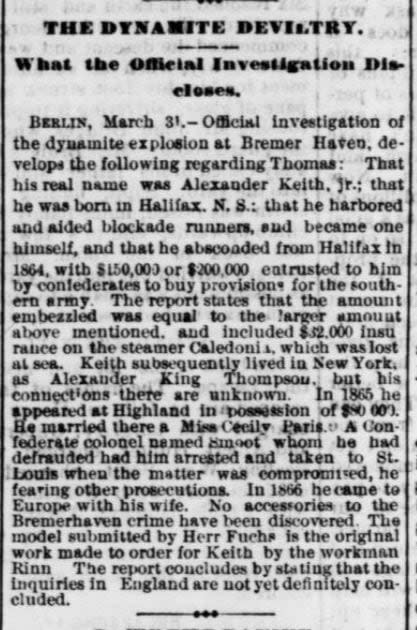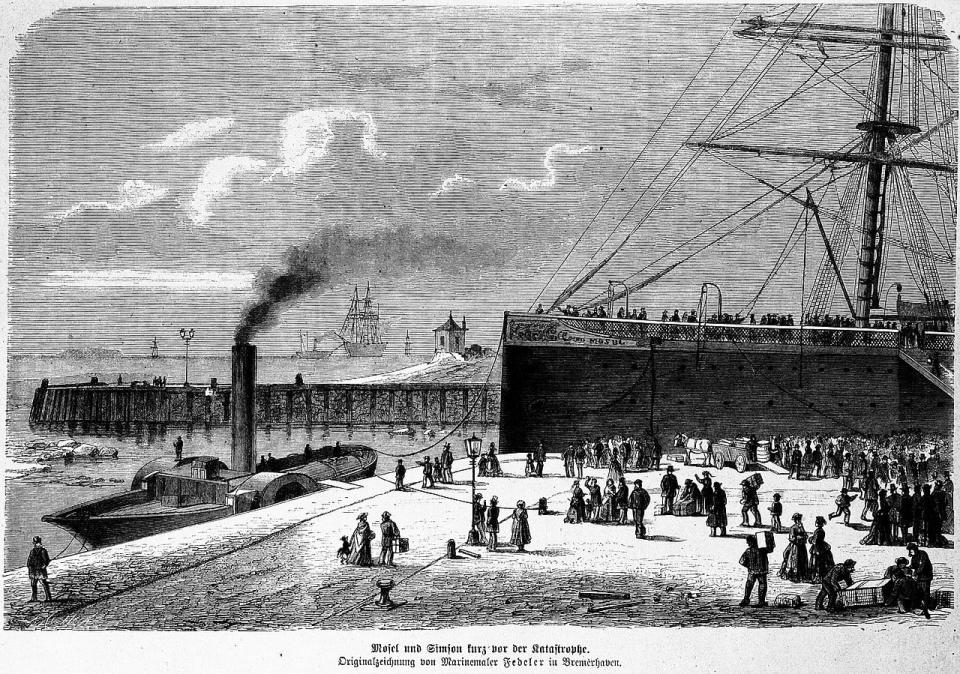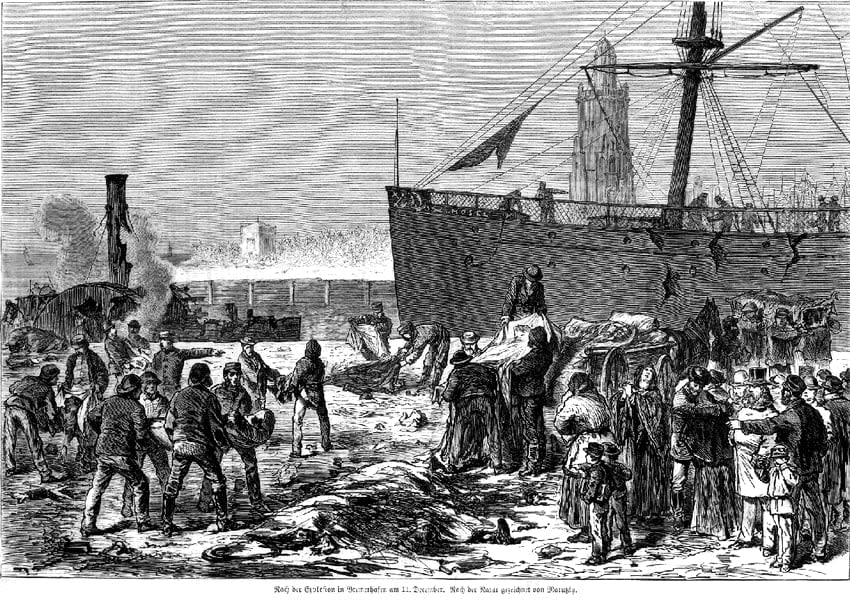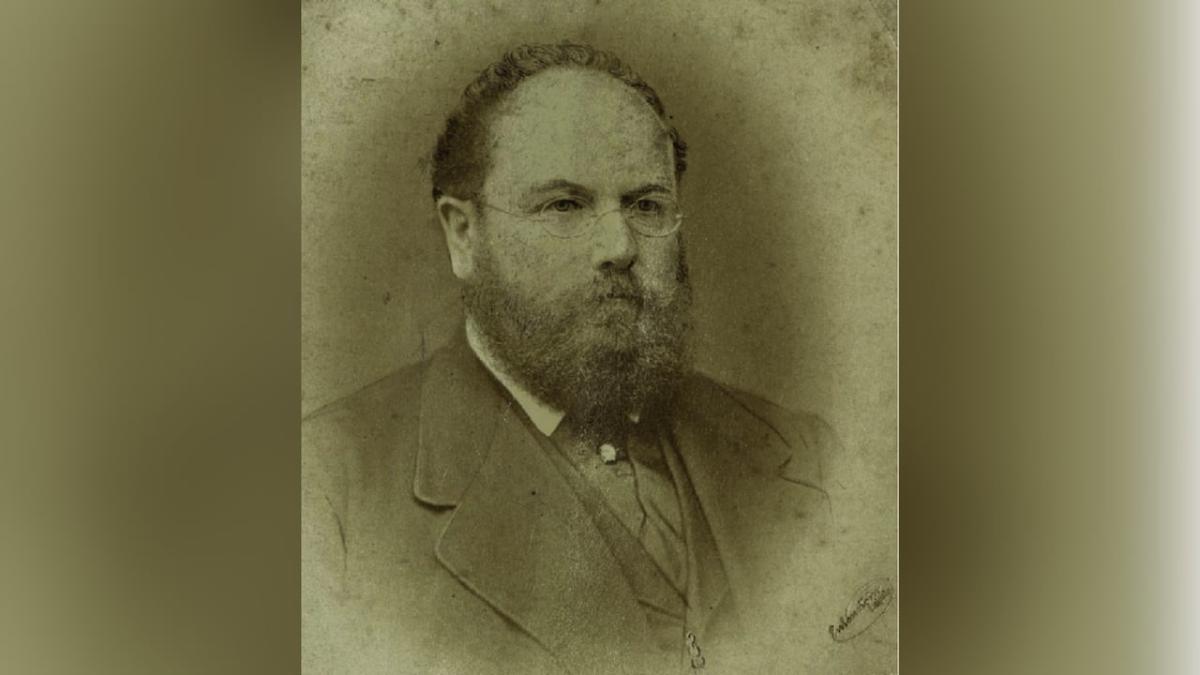While Alexander Keith became famous as a Halifax brewer and politician, his namesake nephew became notorious for his life of deceit and crime.
Alexander Keith Jr. had a long rap sheet, but his biggest crime was an insurance fraud scheme that led to the deaths of dozens of people in an explosion almost 150 years ago in Germany.
“I think of him now as the representative of a certain kind of opportunist who has no conscience and who is willing to carry out the most savage destruction of human life in order to maintain his comforts,” said Ann Larabee, author of The Dynamite Fiend: The Chilling Story of Alexander Keith Jr.
Larabee is a professor emeritus of American studies at Michigan State University who specializes in the history of terrorism and the mechanisms of terror. She travelled to Halifax and Germany to research her book.

Ann Larabee is a professor emeritus of American studies at Michigan State University who specializes in the history of terrorism and the mechanisms of terror. (2016 MSU Board of Trustees)
Keith Jr. was born in Scotland in 1827, but his family moved to Halifax when he was nine.
Larabee said Keith Jr. managed his uncle’s railway project and handled gunpowder distribution.
In 1857, a powder magazine explosion in Halifax, which Keith Jr. was suspected of causing, killed one man and injured 15 others.
Larabee said Keith Jr. was likely involved in a scam, billing for gunpowder at the powder magazine price and obtaining it from cheaper sources. The explosion was probably an intentional act to cover up evidence of the fraud, she said.
During the American Civil War, Keith Jr. smuggled supplies to the Confederacy and later defrauded investors. He frequently used aliases, with William King Thomas being one of the most well known.


A postcard showing the Keith’s Brewery on Lower Water Street around 1865. (Public Domain/Library and Archives Canada)
Fleeing from those he bilked, he moved from Halifax to New York City, then St. Louis, and finally Highland, Ill., where he met and married Cecelia Paris while living under an assumed name.
Still fearful of being caught, Keith Jr. moved to Germany with his wife. He maintained a lavish lifestyle and spent extravagantly, Larabee said.
As his cash began to run out, she said, Keith Jr. went back to his old ways and plotted to make a lot of money quickly.
He came up with a scheme to ship worthless cargo across the Atlantic after insuring it for a large amount, hoping the insurer did not inspect it.
“His idea was that he would get a time bomb made, he would put it on the ship that was shipping these alleged goods, and the ship would blow up somewhere in the Atlantic, taking everyone on board,” Larabee explained.


The Bremerhaven explosion made the newspapers around the world, including this story on the front page of the Atlanta Constitution in 1876. (The Constitution 1876-04-01 Vol 8 Iss 246/Internet Archive)
“Then he would collect the insurance money. We know he tried this at least two times before the SS Mosel explosion.”
In his first attempt, the bomb and ship arrived in New York City unscathed after its journey from Germany.
On his second attempt, he boarded a ship in Liverpool, England, with the bomb, planning to get off when it stopped in Queenstown, Ireland.
But after setting off, it was announced the ship was not stopping there, and he had to hastily defuse the bomb.
For his third try, Keith Jr. employed a custom-built clockwork device as a timer and the newly invented dynamite as the explosive.
The supposed cargo for the journey from Bremerhaven, Germany, was caviar, and he booked a ticket for himself.
On the day of the Dec. 11, 1875, departure, Keith Jr. settled into his cabin, again planning to get off in Ireland, and waited while workmen loaded cargo onto the ship, Larabee said.
As workmen were about to winch Keith Jr.’s heavy barrel on board, the cargo slipped, fell and detonated, killing 81 people.
“People were dismembered, and it also injured 50 more people who were then taken to various places to be treated,” Larabee recounted. “It was a really terrible thing and an astonishing number of people to be killed by this mass murderer.”


An 1876 illustration of the scene at the dock before the explosion. It is labelled ‘Mosel and Simson shortly before the catastrophe. Original drawing by marine painter Carl Justus Fedeler in Bremerhaven.’ (Bremen State Archive/Wikimedia Commons)
Utah resident Raylene Jorgenson said the explosion severely affected her family, causing lasting trauma.
During genealogy research, she learned a number of her family members were at the dock to see off Johann Philipp Etmer, who was heading to Mexico on the SS Mosel to open a business. Many did not survive the blast.


Utah resident Raylene Jorgenson said the explosion caused lasting trauma to her family. (Ken Jorgenson)
Jorgenson recalls visiting a German state museum and looking at images of the scene right after the explosion, which caused “total destruction.”
“On the dock there were body parts. You can see a foot here, a head here, a hand here,” she said.
Witnessing the carnage from his cabin aboard the Mosel and perhaps assuming his role would be discovered, Keith Jr. shot himself twice in the head.
He lived for about a week. Police officers interrogated him in the hospital, but he never admitted his role in the disaster or even his real name. In newspapers, he was called the Dynamite Fiend.


An illustration of the dock showing the aftermath of the explosion. (Illustrirte Zeitung, nr. 1696, 1 January 1876)
Pinkerton detectives hired by German authorities eventually unearthed his identity, Larabee said.
After his death, Keith Jr.’s body was buried in an undisclosed location, but not before the coroner severed his head so that it could be studied for signs of evil tendencies.
According to Larabee, the preserved head in a jar was given to a local history museum.
It was eventually moved to the police building, where it remained until coincidentally it was destroyed in an Allied bombing mission during the Second World War.
MORE TOP STORIES

